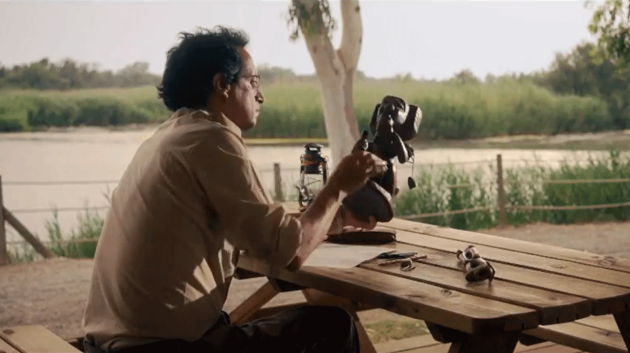

Presented at Barcelona Zoo, the work offers an in-depth look at this Catalan scientist whose numerous notable contributions included his discovery of Floquet de Neu
The first showing coincides with the centenary of the scientist’s birth
The Turkana Films documentary was co-produced by RTVE, Televisió de Catalunya and La Xarxa and received support from the Catalan government's Ministry of Culture, the Catalan Institute of Cultural Enterprises and the Barcelona Zoo Foundation
Coinciding with the centenary of the birth of Catalan scientist and primatologist, Jordi Sabater i Pi, Barcelona Zoo hosted the presentation of Maa-yiem, l’extraordinària història de Jordi Sabater i Pi, a documentary that pays tribute to the man and offers an in-depth look at his legacy, which goes well beyond the discovery of Floquet de Neu. The presentation was attended by the Manager of the Area for the 2030 Agenda, Digital Transition and Sports and the Deputy Chair of the Barcelona Zoo Foundation, Xavier Paton; the documentary’s director, Alfons Par; primatologist and former student of Sabater Pi, Montserrat Colell; and Jordi Sabater i Pi’s son, Oriol Sabater Coca.
This is a Turkana Films documentary co-produced by RTVE, Televisió de Catalunya and La Xarxa and backed by the Catalan government's Ministry of Culture, the Catalan Institute of Cultural Enterprises and the Barcelona Zoo Foundation.
The documentary combines fiction with archive interviews and images and offers a detailed insight into Jordi Sabater i Pi, his passionate story and his legacy.
A hundred years since the birth of Jordi Sabater i Pi
Considered one of the world's leading scientists in the study of primates in their natural state and a discoverer of amphibian species and African birds, Jordi Sabater i Pi (1922 - 2009) was a pioneer in primatology in Catalonia and a key figure in ethnology. He was initially self-taught and he made the most of the time he spent in the former Spanish colony of Equatorial Guinea, from 1940 to 1969, to undertake his first research in the fields of anthropology and ethology. Work which, over time, led him to revolutionise the scientific world with various discoveries.
Part of his research work was based on studying the cultural areas of chimpanzees, the discovery of a species of giant frog (Conraua goliath) in the Mbia River Falls and the identification of honeyguide birds (Melichneutes robustus), as well as the culture and language of the Fang people of Equatorial Guinea. Thanks to his observations of primates in the Okorobikó mountains in the 1960s, he discovered tool use and tool making abilities among this species.
Sabater i Pi received a number of international awards with the publication in 1969 of some of the conclusions of his studies in the magazine Nature.
In addition to these discoveries, however, it was his encounter with a small albino gorilla that made his name locally. It happened during his stay in Bata, in Equatorial Guinea, while he was conducting a study on the coastal gorilla population. Jordi Sabater i Pi called the little gorilla Floquet de Neu [Snow Flake] and had him sent to Barcelona Zoo. A discovery that quickly turned him into a symbol of the city.

